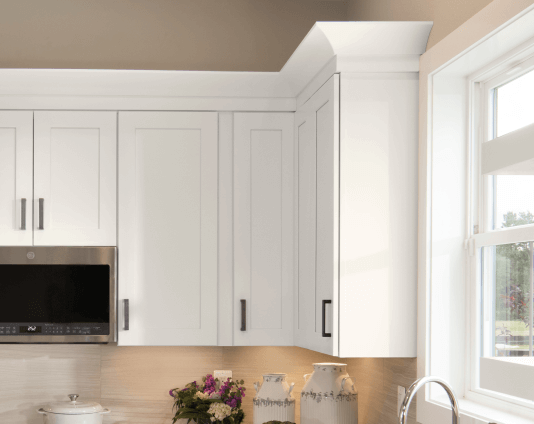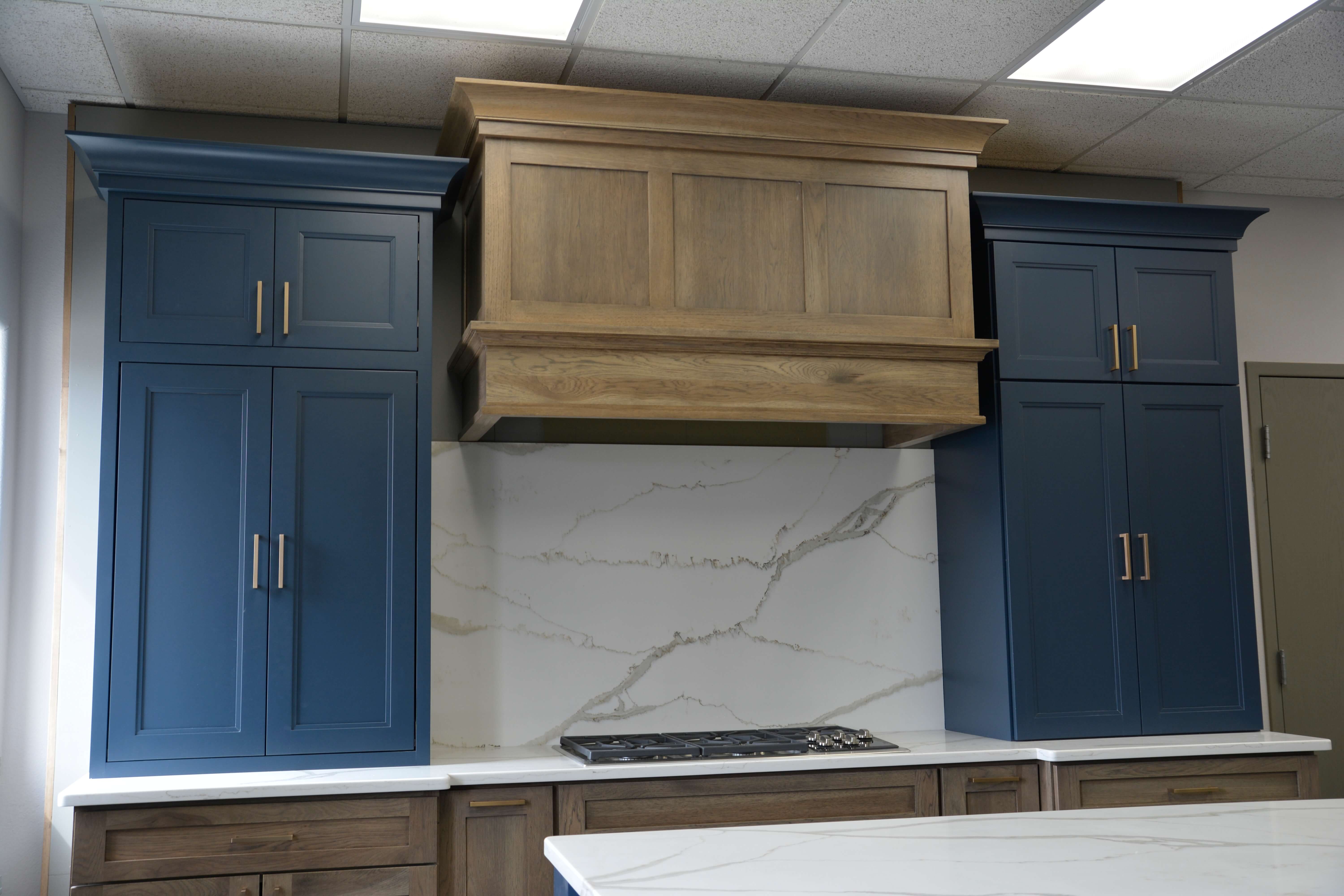If you’re looking to give your kitchen a facelift, decorative molding for kitchen cabinets can make all the difference. Not only does it enhance the visual appeal of your cabinets, but it also adds character and a touch of elegance to the space. With my experience in home decor and renovations, I can assure you that investing in decorative molding will elevate your kitchen to the next level. Let’s dive into this comprehensive guide to help you explore the beauty and functionality of decorative moldings.
What is Decorative Molding?
Decorative molding refers to the embellishments added to various surfaces, including cabinetry, walls, and ceilings. In the context of kitchen cabinets, it serves as a stylish element that can highlight architectural features or serve a functional purpose. From crown moldings to baseboards, the options are endless!
Types of Decorative Molding for Kitchen Cabinets
Understanding the various types of decorative moldings available is essential when considering your kitchen design. Here are some of the most popular types:

- Crown Molding: This is installed at the top of cabinets and adds height and elegance to the kitchen. It creates a seamless transition between the cabinets and the ceiling.
- Base Molding: Positioned at the bottom of the cabinets, base molding can protect against damage and give a polished look.
- Panel Molding: Used to frame the cabinet doors, panel molding adds depth and dimension.
- Chair Rail Molding: While more common on walls, it can also be used uniquely in cabinetry to create a distinguished look.
Benefits of Using Decorative Molding

Incorporating decorative molding into your kitchen cabinets has several advantages. Let’s explore some of them:
1. Aesthetics
Decorative moldings can greatly enhance the visual appeal of your kitchen. They can transform plain cabinets into stunning focal points that capture attention.

2. Value Addition
Well-designed moldings can increase the resale value of your home. Buyers often appreciate the finer details, and quality moldings can set your property apart in the market.
3. Customization
Moldings allow for a high degree of customization. You can choose styles, colors, and sizes that match your personal taste and the overall design of your kitchen.

4. Conceal Imperfections
Moldings can effectively hide gaps, seams, and imperfections in cabinetry installation, giving your kitchen a flawless look.
Pros and Cons of Decorative Molding
| Pros | Cons |
|---|---|
| Enhances aesthetic appeal | Can be costly depending on materials |
| Adds value to your home | May require professional installation |
| Allows for customization | Can be challenging to clean if intricately designed |
| Conceals installation flaws | Potential for damage in high-moisture areas |

Choosing the Right Decorative Molding for Your Kitchen Cabinets
When selecting decorative moldings, consider factors such as style, material, and the overall theme of your kitchen.

1. Style
Do you prefer a modern, sleek look or a more traditional, ornate style? Your choice of molding should reflect your kitchen’s overall aesthetic. For instance:
- Modern Kitchens: Opt for simple, straight lines without excessive detailing.
- Traditional Kitchens: Choose elaborate moldings with intricate designs.
2. Material
The material of your molding can significantly impact both appearance and durability. Common materials include:
- Wood: Classic and versatile, wood can be stained or painted, but it is susceptible to moisture damage.
- Polyurethane: Lightweight and moisture-resistant, polyurethane can mimic the look of wood without the drawbacks.
- MDF (Medium Density Fiberboard): Affordable and easy to work with, MDF provides a smooth surface for painting but can also swell in moisture.

3. Color
Choose a color that complements your cabinets and overall kitchen design. White or cream moldings can create a classic look, while bold colors can add modern flair.
How to Install Decorative Molding on Kitchen Cabinets
If you’re handy or want to save some money, installing decorative molding yourself can be a rewarding project. Here’s a step-by-step guide:
Step 1: Gather Your Tools
You’ll need:
- Molding of your choice
- Measuring tape
- Compound miter saw
- Wood glue
- Nails and a nail gun (or hammer and finishing nails)
- Caulk
- Paint or stain (if desired)
Step 2: Measure and Cut
Measure the cabinet edges where you plan to attach the molding. Use a compound miter saw to cut the molding to size, paying special attention to the angles for corners.
Step 3: Attach the Molding
Apply wood glue to the back of the molding and position it on the cabinet. Secure it with nails, ensuring it’s flush with the surface. Use a nail gun for a cleaner finish.
Step 4: Caulk and Paint
After installation, apply caulk to fill any gaps between the molding and the cabinet. Once dried, paint or stain the molding to complete the look.
Comparing Decorative Molding Options
To help you decide, here’s a quick comparison of different molding materials:
| Material | Durability | Cost | Maintenance |
|---|---|---|---|
| Wood | High | Expensive | Requires occasional refinishing |
| Polyurethane | Moderate | Moderate | Easy to clean and maintain |
| MDF | Moderate | Low | Prone to moisture damage |
FAQs About Decorative Molding Kitchen Cabinets
1. What is the average cost of decorative molding for kitchen cabinets?
The cost can vary widely based on material, style, and professional installation. On average, expect to pay between $1 to $10 per linear foot for the molding itself, plus installation costs if you choose to hire a professional.
2. Can I paint my existing cabinet moldings?
Absolutely! A fresh coat of paint can breathe new life into your moldings. Just ensure you properly clean and prepare them before painting for the best results.
3. How do I maintain decorative moldings?
Regular dusting and cleaning with a damp cloth will keep your moldings looking great. For painted moldings, consider touching up any scratches or chips as needed.
4. Are there specific moldings for different kitchen styles?
Yes, the style of molding you choose should complement the overall aesthetic of your kitchen. For example, ornate moldings work well in traditional kitchens, while simpler profiles suit modern designs.
Conclusion
Decorative molding for kitchen cabinets is more than just an embellishment; it’s a transformative element that can elevate your space. Whether you opt for a classic crown molding or a sleek baseboard, the right choice can add beauty and value to your home. I hope this guide has equipped you with the knowledge and inspiration to enhance your kitchen with decorative moldings.
Remember, your kitchen is the heart of your home, and a few well-chosen details can make it feel truly special. Happy decorating!